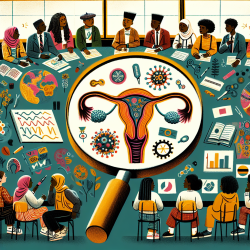Empowering Change: A Pathway to Healthier Futures for Rural Children
In the quest to improve health outcomes for children, especially those in under-resourced rural areas, the recent study titled Hoosier Sport: a research protocol for a multilevel physical activity-based intervention in rural Indiana offers a promising blueprint. By employing a human-centered design and community-based participatory research (CBPR), this study aims to tackle the pressing issue of physical inactivity among rural children, which is closely linked to cardiovascular disease (CVD) risk.
Data reveals that only 1 in 4 children in the U.S. engage in the recommended amount of physical activity (PA), with rural children facing significant barriers due to socioeconomic factors. The study highlights the critical need for scalable, evidence-based PA interventions that address these disparities.
Human-Centered Design: A Community-Focused Approach
The study employs a three-phase approach that integrates the NIH Stage Model for Behavioral Intervention Development with a college student mentor implementation strategy. This methodology places community stakeholders, including children, at the center of the intervention development process. Such involvement ensures that the intervention is tailored to the specific needs and preferences of the community, enhancing its relevance and potential impact.
- Aim 1: Conduct a CBPR needs assessment to identify perceptions, barriers, and facilitators of PA among middle school students, parents, and teachers.
- Aim 2: Co-design a prototype multi-level PA intervention protocol, Hoosier Sport, with input from both children and adults.
- Aim 3: Assess the feasibility of the Hoosier Sport intervention in a rural middle school setting.
Implementing Data-Driven Interventions
For practitioners, the study underscores the importance of data-driven decision-making in designing interventions. By leveraging data from community assessments and co-design sessions, practitioners can develop targeted interventions that address the unique challenges faced by rural children. This approach not only enhances the effectiveness of interventions but also ensures sustainability by fostering community ownership and involvement.
The study's innovative use of college student mentors as facilitators offers a cost-effective and sustainable model for intervention delivery. College students, seen as relatable role models by children, can effectively promote behavior change through mentorship and support.
Encouraging Further Research and Application
The findings from the Hoosier Sport study provide a robust foundation for practitioners to build upon. By adopting a human-centered design and multilevel intervention framework, practitioners can develop scalable solutions that address health disparities in rural communities. Moreover, the study encourages further research into the role of community engagement and participatory design in enhancing intervention outcomes.
For those interested in exploring the full details of the study, I highly recommend reading the original research paper. To access it, please follow this link: Hoosier Sport: a research protocol for a multilevel physical activity-based intervention in rural Indiana.










